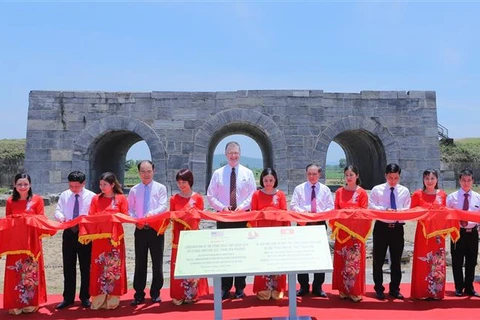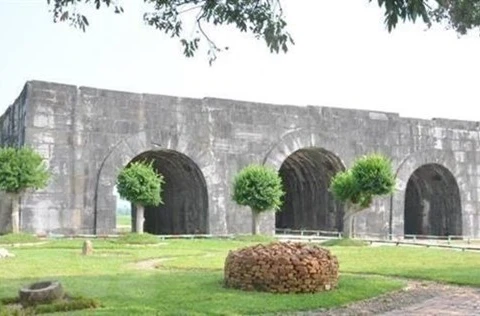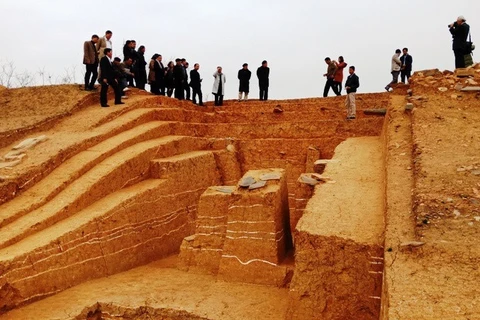Thanh Hoa (VNA) - Ho Dynasty Citadel, also known as Tay Do citadel, in Vinh Long and Vinh Tien communes, Vinh Loc district, the central province of Thanh Hoa province is one of the most unique stone architectures of Vietnam and the world.
Ho Dynasty Citadel was recognised by the United Nations Educational, Scientific and Cultural Organisation (UNESCO) as a world cultural heritage site in 2011.
Not the only stone work in Vietnam and the region, but the citadel is still an "unprecedented" proof of different and unique construction techniques, as large rocks are its main raw material.
The citadel was the cultural centre of the capital of Vietnam in the late 14th century and early 15th century and a political, economic and cultural hub of the northern part of the central region of Vietnam from the 16th to the 18th century.
It was built in 1397 in the two communes of Vinh Tien and Vinh Long with the supervision of the Tran Dynasty's top mandarin, Ho Quy Ly. He later occupied the citadel when he forcibly took the throne in 1400, changing the country's name from Dai Viet to Dai Ngu.
The citadel is unique for its outstanding construction technique which used large blocks of stone, weighing from 10 tonnes to 26 tonnes each, carefully shaped, interlocked and elevated to about 10 meters high. The citadel buildings represented an outstanding example of a new style of Southeast Asian imperial cities. It features four arched gates facing east, west, north and south. The large stone slabs required a new building technique that workers installed without the use of any mortar.
The citadel served as a military stronghold to protect the country from invasion, thus becoming a symbol of patriotism and national pride, and a witness of Vietnamese history during the late 14th and early 15th century. The citadel's grounds include the Hoang Nguyen, Dien Tho and Dong Cung palaces, which were linked by roads paved with stone. The citadel itself includes buildings such as the Dan Nam Giao (a platform used for offerings to the heaven), Dong Mon communal house and Tam Tong temple, among other structures. However, after several centuries, almost all of the citadel's main structures have been seriously damaged, while the walls and four main entrances are still well preserved.
Over the past years, several large excavations have been carried out in the precint of the citadel.
In the 2020-2021 period, the Institute of Archaeology and the Ho Citadel Heritage Conservation Centre have dug six excavation holes with a total area of 25,000sq.m.
The excavation has revealed four clusters of vestiges dating back to the Tran Dynasty (1226-1400) and Ho Dynasty (1400-1407), and three architectural clusters of the Later Le Dynasty (1428–1788). Notably, architectural vestiges of the Tran - Ho dynasties were found in excavation holes in the central, southeast and southwest parts on an area of about 16,000sq.m.
Bricks decorated with flower patterns produced in the Ly Dynasty (1009-1226) and the Tran Dynasty (1226-1400) were also discovered, as were some created in the citadel and bearing ancient characters.
The artifacts enable scientists and archaeologists for the first time to clearly envisage the different architectural styles of the citadel.
According to archaeologists, the found vestiges are thought to belong to the main hall of Ho Dynasty Citadel, the oldest of its kind in Vietnamese ancient capitals discovered so far.
Chairman of the Vietnam Association of Archaeologists Tong Trung Tin said that this is the largest excavation in the history of archaeology in Vietnam in terms of area in one excavation. The discovery of more than 20 architectural works of different periods has confirmed the outstanding global values of the World Cultural Heritage site. The excavation also shows that more architectural relics are hidden under Ho Dynasty Citadel./.























